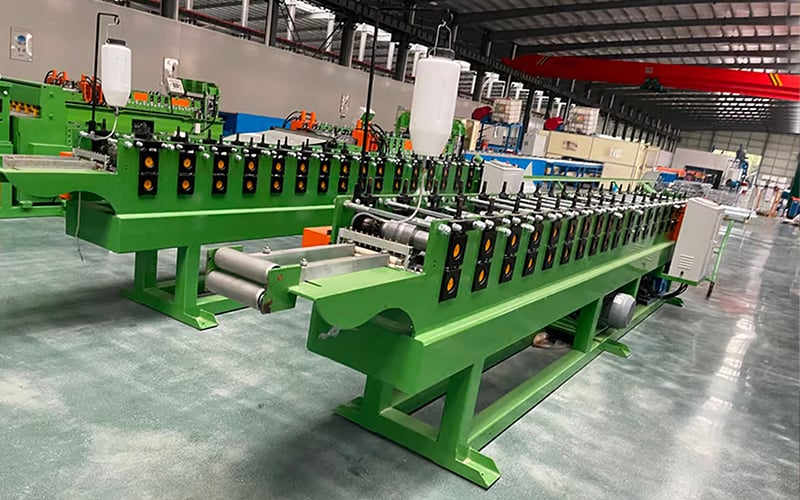Table of Contents

Keel Roll Forming Machine: Revolutionizing the Construction Industry
When it comes to efficient and precise construction processes, the keel roll forming machine has become a game-changer in the industry. With its ability to produce high-quality keel profiles with minimal human intervention, this machine has revolutionized the way buildings are constructed. In this article, we will explore the various aspects of the keel roll forming machine and its impact on the construction sector.
1. Understanding the Keel Roll Forming Machine
The keel roll forming machine is a specialized equipment used to fabricate metal keel profiles used in the construction of walls, ceilings, and other structural components. It is designed to transform metal coils into precise and consistent keel shapes through a continuous roll forming process. This machine offers exceptional flexibility, allowing for customization of keel profiles according to specific project requirements.
2. The Advantages of Using a Keel Roll Forming Machine
2.1 Increased Efficiency: By automating the keel production process, the machine significantly reduces the need for manual labor, thus increasing overall production efficiency.
2.2 Consistency in Output: The machine ensures consistent and accurate keel profiles, eliminating variations that may arise due to human error.
2.3 Cost-Effectiveness: With reduced labor requirements and increased productivity, using a keel roll forming machine can lead to significant cost savings in the long run.
2.4 Customization Options: The machine allows for flexible customization of keel profiles, catering to the unique needs of different construction projects.
3. The Roll Forming Process
The roll forming process employed by the machine involves passing a metal coil through a series of rollers, each progressively bending the metal until the desired keel shape is obtained. The metal is shaped without any loss of material, ensuring maximum utilization and minimal waste. This process can be easily adjusted to create different keel profiles, making the machine suitable for a wide range of construction applications.
4. Materials Used in Keel Roll Forming
Various materials can be used in the keel roll forming process, including steel, aluminum, and galvanized steel. These materials offer different levels of strength, corrosion resistance, and cost-effectiveness, allowing builders to choose the most suitable option for their specific project requirements.
5. Applications of Keel Roll Forming Machine
5.1 Wall Construction: The keel profiles produced by the machine are widely used in wall construction, providing structural support and a base for interior finishes.
5.2 Ceiling Systems: The machine also plays a crucial role in the construction of suspended ceiling systems, providing support for ceiling tiles and other decorative elements.
5.3 Partition Walls: Keel profiles are commonly used in creating partition walls, allowing for flexible and customizable room layouts.
5.4 Roofing Systems: The machine can produce keel profiles used in roofing systems, ensuring durability and proper water drainage.
6. Maintenance and Safety Considerations
Maintaining the keel roll forming machine is crucial to ensure its optimal performance. Regular lubrication, cleaning, and inspection of the machine's components are essential to prevent breakdowns and maintain production efficiency. Additionally, operators should follow safety protocols, such as wearing protective gear and adhering to safe operating procedures, to minimize the risk of accidents.
7. Future Trends and Innovations
As technology continues to advance, the keel roll forming machine is expected to undergo further improvements. This may include enhanced automation, integration with other construction equipment, and the use of advanced materials. These developments will contribute to even greater efficiency, precision, and customization options in the construction industry.
8. Selecting the Right Keel Roll Forming Machine
When choosing a keel roll forming machine, several factors should be considered, such as production capacity, customization options, ease of operation, and maintenance requirements. It is crucial to select a machine that aligns with the specific needs and goals of the construction project.
9. Training and Expertise
Operating a keel roll forming machine requires proper training and expertise. Operators should be familiar with the machine's functionalities, safety protocols, and troubleshooting techniques to ensure smooth operation and optimal output quality. Training programs and certifications are available to equip operators with the necessary skills and knowledge.
10. Conclusion
The keel roll forming machine has undoubtedly transformed the construction industry by streamlining the production of keel profiles. With its numerous advantages, including increased efficiency, consistency, and cost-effectiveness, this machine has become an indispensable tool in modern construction projects. As technology continues to advance, we can expect even more innovative developments in keel roll forming, further revolutionizing the way we build.

